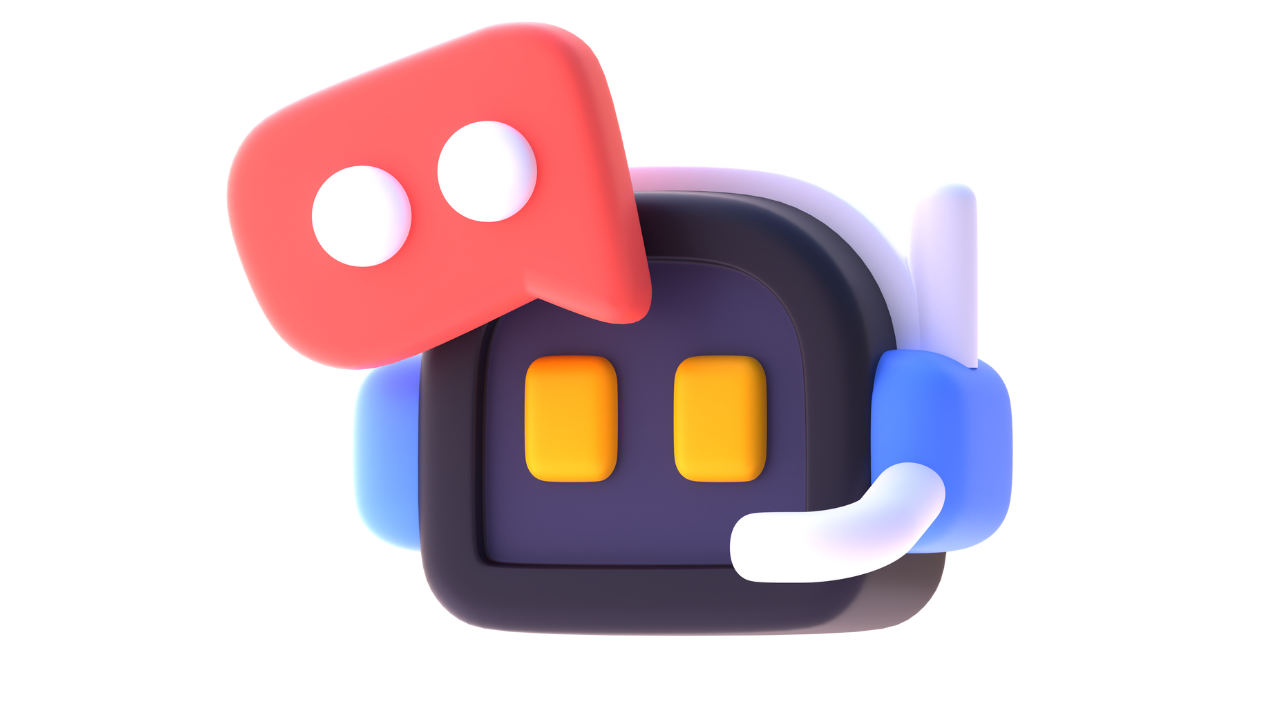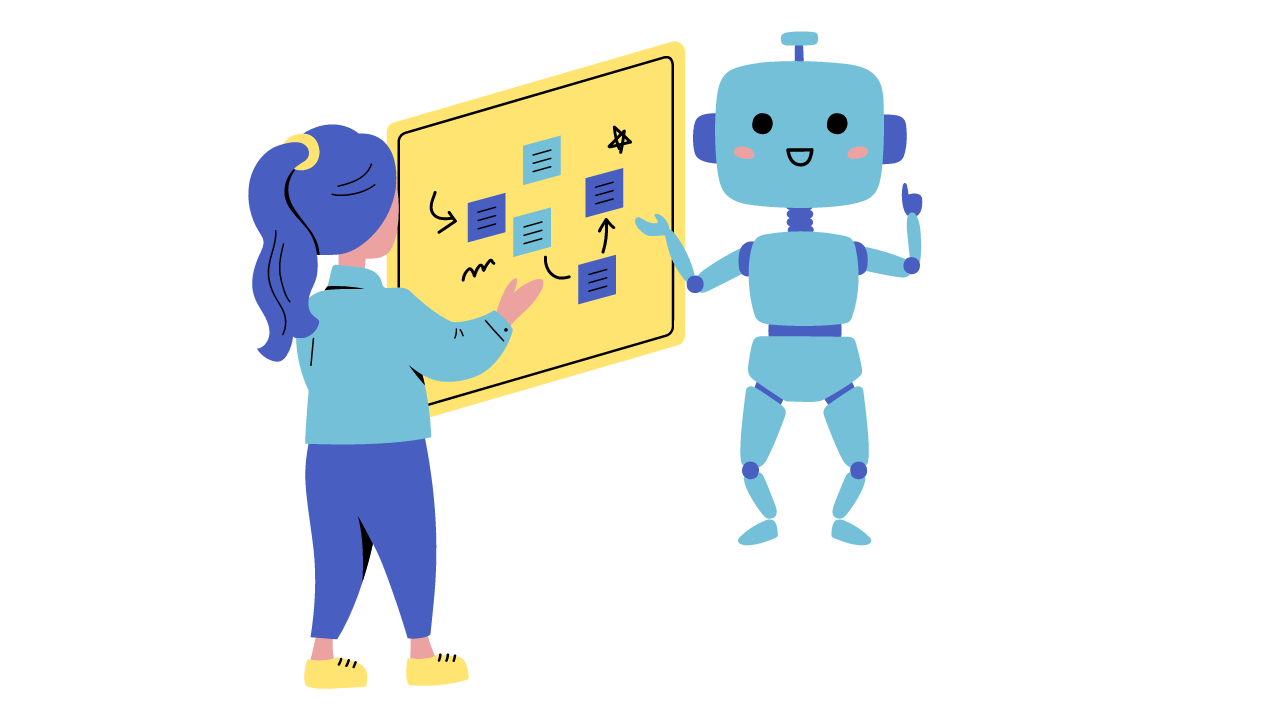%2520(1).png)
Imagine having an AI friend to have a conversation with.
The era of conversational AI has arrived, transforming the way we interact with technology. From virtual assistants like Siri and Alexa to chatbots on websites, conversational AI has become a casual and integral part of our lives.
Conversational AI is like having a friendly and intelligent companion that can understand and respond to us in a natural and conversational manner. It's the technology behind virtual assistants like Siri, Alexa, or Google Assistant that we interact with using voice commands or text-based conversations.
Using natural language processing and machine learning, conversational AI systems can understand our queries, provide information, perform tasks, and even engage in meaningful conversations. They make our interactions with technology more intuitive and human-like.
Imagine asking a virtual assistant about the weather, setting reminders, playing music, getting directions, ordering food, or even having a casual chat. Conversational AI enables us to do all this effortlessly by speaking or typing in everyday language.
These AI systems analyze the input, extract meaning, and generate appropriate responses. They learn from our interactions, becoming smarter over time, and improving their accuracy and understanding of our preferences.
Conversational AI is not limited to personal assistants alone. It's used in customer support chatbots, language translation apps, smart home devices, and various other applications. It helps us get instant help, find information, and accomplish tasks without the need for complex interfaces or browsing through numerous menus.
As technology advances, conversational AI continues to evolve, offering more personalized experiences and expanding its capabilities. It's an exciting and ever-growing field that brings us closer to seamless human-machine interactions, making our lives easier and more enjoyable.
A virtual personal assistant, like Apple's Siri, Amazon's Alexa, or Google Assistant, is a prime example of conversational AI. It is designed to assist users with tasks and provide information through natural language interactions. Users can ask questions, give commands, set reminders, play music, control smart home devices, and more.

Conversational AI is making waves in the world of technology, transforming how we interact with machines in a more natural and human-like way. From virtual assistants to chatbots, conversational AI has become an integral part of our daily lives. But have you ever wondered what makes these systems work seamlessly? They are the components of conversational AI. Let’s take a look

First up, we have Natural Language Processing, the superstar behind conversational AI. NLP enables machines to understand and interpret human language, allowing them to comprehend the meaning behind our words. It's like teaching your computer to speak and understand English (or any other language you prefer).

Think of dialog management as the conductor of the conversational AI orchestra. It ensures a smooth and coherent flow of conversation between humans and machines. Dialog management keeps track of the context, remembers previous interactions, and decides the appropriate responses based on the current state.
Machine learning, the magician behind the scenes! Conversational AI systems use machine learning algorithms to improve over time by learning from real-life interactions. The more data they receive, the smarter they become. It's like having a personal assistant who remembers your preferences, adapts to your speech patterns, and anticipates your needs. Machine learning enables conversational AI to continuously evolve and provide better, more personalized experiences.

Have you ever talked to your phone and had it transcribe your words into text? That's the magic of speech recognition! This component converts spoken language into written text, allowing conversational AI systems to understand voice commands. It's like having a virtual ears and a notepad, capturing every word you say and translating it into a format that the machine can process. Speech recognition is what brings the "voice" to voice-controlled systems.

Last but not least, we have natural language generation. NLG takes the information and responses generated by conversational AI systems and transforms them into human-like language. It's like having a robotic writer who can craft well-formed sentences and paragraphs. NLG ensures that the responses generated by the machine are not only accurate but also sound natural and human.
v As this technology continues to advance, we can expect even more impressive and engaging conversational experiences in the future.

These AI-powered virtual assistants are designed to engage in text-based conversations with users. You've probably come across them on websites or messaging apps, ready to help you with your queries. Chatbots can provide information, answer FAQs, and even assist with basic tasks like booking appointments or ordering products. They're like your virtual customer support agent, available 24/7, and always ready to chat.

Next up, we have the chatty voice assistants that live inside our devices. Think Siri, Alexa, or Google Assistant. These conversational AI buddies respond to voice commands and make our lives easier. From setting reminders and playing music to providing weather updates and answering random trivia questions

Virtual agents take conversational AI to the next level. These intelligent beings are designed to simulate human-like conversations and interactions. They can understand natural language, process complex queries, and provide personalized recommendations. Virtual agents are often employed in customer service scenarios, assisting customers with their inquiries, troubleshooting issues, and guiding them through the buying process.

Ever wondered who's behind those witty, informative, or sassy social media accounts? Well, many times, it's conversational AI at work! Social media bots are programmed to engage with users on platforms like Twitter, Facebook, or Instagram. They can respond to comments, answer questions, and even generate personalized content. Social media bots add a touch of automation and interactivity to our favorite online hangouts, making us feel heard and entertained.

If you've embraced the smart home revolution, you're probably familiar with smart home assistants. These conversational AI marvels, like Amazon Echo or Google Nest, can control your lights, adjust the thermostat, play your favorite tunes, and even order groceries—all with a simple voice command.
Conversational AI is a versatile technology that takes on various forms to cater to different needs. Whether it's chatbots providing instant support, voice assistants following our every command, virtual agents offering personalized assistance, social media bots engaging with us online, or smart home assistants transforming our living spaces.
Let's explore some of the awesome advantages of using conversational AI.

One of the greatest perks of conversational AI is its round-the-clock availability. Chatbots and virtual assistants are always there to assist us, regardless of the time or day. No more waiting in long customer service queues or searching for answers on websites. Conversational AI ensures instant access to information and support whenever we need it. It's like having a helpful companion who never sleeps.

Conversational AI has transformed the customer service landscape. By deploying chatbots and virtual agents, businesses can offer prompt and personalized assistance to their customers. Conversational AI systems can handle multiple inquiries simultaneously, reducing wait times and improving overall customer satisfaction.

With conversational AI, user experience has reached new heights. Instead of navigating through complex menus or filling out lengthy forms, we can simply have a conversation with a virtual assistant or chatbot. Conversational AI systems understand natural language, making interactions more intuitive and effortless. Whether it's searching for information, making reservations, or controlling smart devices, conversational AI streamlines tasks and makes our lives easier.

Conversational AI excels at personalization. These systems can analyze user data and preferences to offer tailored recommendations and experiences. Whether it's suggesting products, providing personalized content, or remembering our past interactions.

Conversational AI brings efficiency to both businesses and individuals. By automating routine tasks and providing instant responses, conversational AI saves time and reduces human effort. Businesses can handle a higher volume of customer inquiries without increasing their support staff, while individuals can accomplish tasks more quickly. Conversational AI streamlines processes, minimizes errors, and maximizes productivity.
Conversational AI has become an integral part of our daily lives. So, the next time you chat with a bot or ask your voice assistant a question, appreciate the diverse types of conversational AI that are working behind the scenes to make our interactions smoother, more efficient, and a lot more fun!